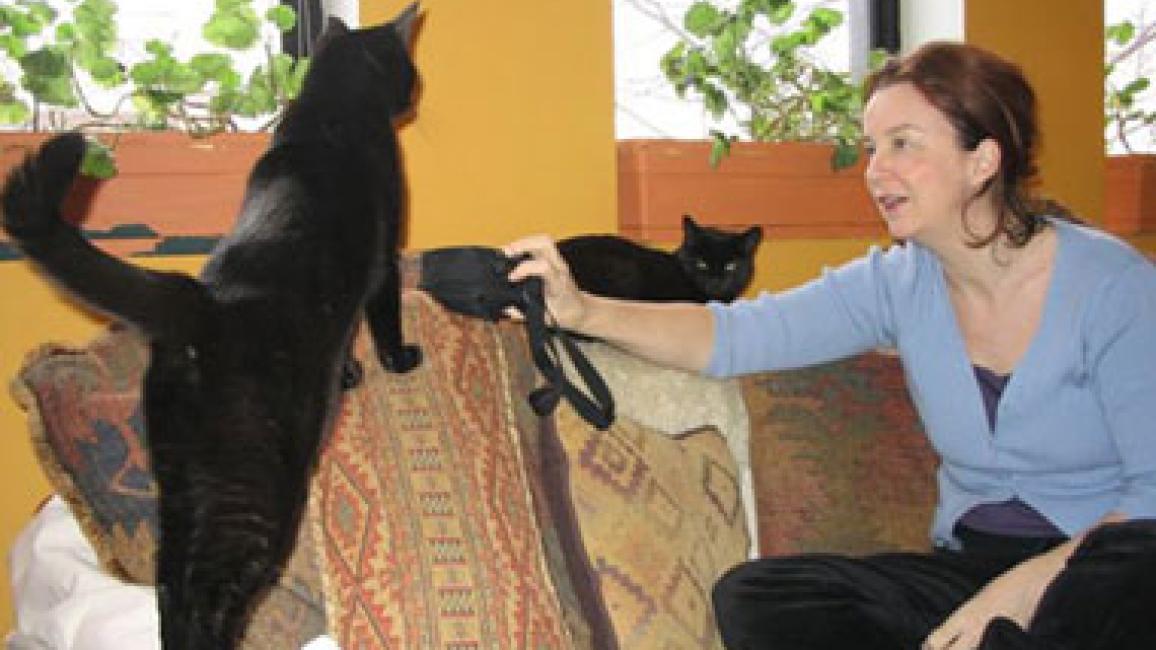Feral cat trapper's personal story

When Anne Berrigan’s neighbors in her building in Boston met to discuss how to exterminate the stray cats who were "bothering people," she just had to stop the discussion. "I said, ‘Wait a minute. I know there is a more humane solution.’"
Helping feral cats humanely
Anne said she learned about the more humane solution when she visited Best Friends. As part of her visit, she saw the former street cats who couldn’t make it without the special help available at the TLC Cat Club. She saw that many of them - those who had probably been someone's pet at one time - blossomed with unconditional love and now welcomed being petted. She also saw the true ferals who had never trusted people and still weren’t so sure about human contact, but grudgingly accepted food and shelter.
It hit home for Anne, especially since one of her two black cats was a former street kitty who turned out to be very friendly.
"I remember thinking on my way home that I’d like to learn how to care for feral cats. So at that meeting, I tried to explain that these cats deserved a chance. I volunteered to explore finding a trapper to help us and they were willing for me to do that."
HubCats Boston provides info about caring for street cats
Anne’s research led her to HubCats Boston, a small, no-kill, home-based shelter in the Forest Hills neighborhood of Jamaica Plain. HubCats is also a network of loving foster homes, friends, sympathetic veterinarians and feline rescuers, all working to reduce the number of homeless cats in the backyards and streets of that area of Boston.
From the HubCats website, Anne realized she did not know the full story of caring for ferals. A large part of the story is feeding the cats and watching over them after they are sterilized and returned to their colony. Anne said, "I left a posting asking for help, but even before I left the posting I signed up to volunteer to feed. I remember the epiphany, ‘Oh, that’s how it works. After you return them, you feed them.’"
Trap/neuter/return (TNR)
HubCats was able to work with Anne’s neighbors and teach them that the only sane way to deal with feral cats is trap/neuter/return (TNR), rather than removing them only to have other unsterilized cats come in and fill the vacuum. Anne said she learned that working with feral cats is as much about people as it is cats. "There is a whole parallel universe of cat people and people who are willing to get involved in some way. It just starts by understanding the process and finding where you fit in, whether it's as a trapper or a feeder, or spotting the cats in the first place, or in helping to educate people. One of the fun parts is working with the people who feed but don’t know how important it is to neuter the cats."
Anne, who is a policy and program associate for a nonprofit organization that recruits teachers, said she also discovered the substantial rewards of helping animals who may never show any gratitude at all. "This is so rewarding. I’m helping these lovely creatures who have been through a lot and don’t deserve to be scrounging for every scrap of food."
Learn more about caring for feral cats.